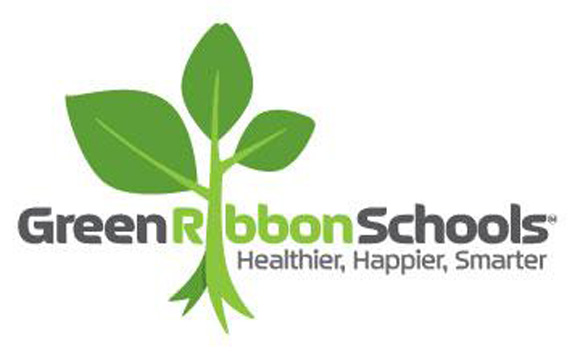What schools are honorees of the 2013 Green Ribbon Schools?

“Going green” is changing the way we live, work and act for the safety and benefit of our natural resources. As such, we are carpooling, recycling and reusing products to be more environmentally friendly. With the U.S. Department of Education’s implementation of a recognition award for K-12 schools that focus on green initiatives, the critical questions to be asked are: What schools are honorees of the 2013 U.S. Department of Education Green Ribbon Schools? What are some best practices exemplified by these schools?
In its second year of implementation, the U.S. Department of Education Green Ribbon Schools (ED-GRS) recognition honors schools that are exemplary in reducing environmental impact and costs; improving the health and wellness of students and staff and providing effective environmental and sustainability education, which incorporates STEM, civic skills and green career pathways.
This year, a total of 64 schools (54 public and 10 private) were announced winners on Earth Day, April 22. These honorees represented 29 states and the District of Columbia with California, Pennsylvania, Washington and Wisconsin having the most honorees. More than half of the honorees educate underserved student populations, and 40 percent of the populations are eligible for free and reduced lunch.
According to Secretary of Education Arne Duncan, “The honorees are modeling a comprehensive approach to being green. They are demonstrating ways schools can simultaneously cut costs; improve health, performance and equity; and provide an education geared toward the jobs of the future. In fact, the selected districts are saving millions of dollars as a result of their greening efforts. And the great thing is that the resources these honorees are using are available for free to all schools.”
As a model for other schools, the following provides an excerpt of two honorees’ initiatives: Driftwood Middle School in Hollywood, Fla. and Ford Elementary School in Acworth, Ga.
Driftwood Middle School:
Across the board, green practices have led to improved science scores, reduced environmental costs and impacts, and more balanced diets at Florida’s Driftwood Middle School Academy of Health and Wellness, where 73 percent of the students are eligible for free or reduced rate lunches. Driftwood’s conservation efforts began in 2008 with the launch of its energy reduction challenge, “How Low Can You Go?” Since then, students and teachers have used multiple creative means to effectively reduce its carbon footprint.
To encourage teachers to turn off lights after school hours, Green Team students left painted paw prints stating “You’ve been chilled!” on the classroom doors of those who had not. As a result, Greenhouse Gas emissions dropped 23 percent. Water use dramatically dropped by 38 percent — with 70 percent of the school’s outdoor campus landscaped with native plants that thrive on natural rainfall. Forty-five percent of campus-generated waste is recycled, with special needs students taking the lead in collecting bottles and cans. The drama club won the Broward County Public Broadcasting Announcement Video Contest with its “Recycle, Reduce, and Reuse” video.
Ford Elementary School:
Ford Elementary School sits amid more than 20 acres and uses more than 60 percent of the grounds for environmental education and habitat protection. Built in 1991, Ford Elementary was designed to accommodate 900 students, but within three years needed to educate more than 1700 students. Within its first year, Ford became a National Wildlife Federation Certified Schoolyard Habitat. After additional schools were built to relieve overcrowding, Ford became proactive in reclaiming its native habitats.
During the summer of 2013, Ford Elementary will undergo its first extensive renovation since the building was constructed. Several energy saving projects will reduce environmental impact and improve the health and safety of students, staff and the community. Once the project is complete, it will be eligible to apply for the EPA’s ENERGY STAR certification. Highlights of the project include a new HVAC system and occupancy sensors in each room to more effectively regulate energy usage. At the conclusion of the project, Ford expects its energy efficiency to increase from approximately 80 percent to over 92 percent.
We sincerely congratulate all the honorees of the 2013 U.S. Department of Education’s Green Ribbon Schools award program for their efforts to make their schools safer, healthier, cost efficient and effective in teaching environmental education. To review information on all of the recipients, please go to the U.S. Department of Education’s website regarding Green Ribbon Schools.
Dr. Ronald Holmes is the author of three books, “Education Questions to be Answered,” “Current Issues and Answers in Education” and “How to Eradicate Hazing.” He is publisher of “The Holmes Education Post,” an education focused Internet newspaper. Holmes is the national superintendent of education for the National Save the Family Now Movement, Inc., a former teacher, school administrator and district superintendent. He can be reached at [email protected].

